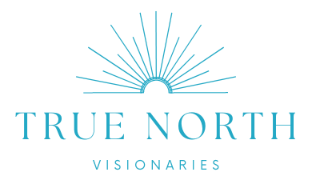Whenever I ask a group of business owners the first word that comes to mind when I say the word “Vision”, someone always says “future”.
So it makes sense that most people think the Visioning process begins with thinking about their future.
And that’s also why most Visioning workbooks and exercises fall in line with Stephen Covey’s famous advice to “begin with the end in mind.”
They give you a few blank lines to write about your 'perfect future' in 3-5 years and leave it at that.
Here’s the problem with beginning with the end
Staring at a blank page with a prompt to articulate your long-term Vision is completely overwhelming.
If you jump straight to the “end” it’s often not what you actually have in mind. It’s surface-level goals and vague aspirations instead of a deep understanding of what you truly want your life to look and feel like.
Like we’ve talked about before, a Vision is your definition of success at a specific point in the future and a range of two years is definitely not specific!
Go back to spring farther forward
The approach I use to support my clients is that before you even begin to think about your future, you’ve got to understand your past. In the process of exploring how you got to where you are, you uncover your patterns and their impact.
As you connect the dots, you find yourself saying things like…
“I never realized it, but while I’ve brought 2 kids into the world, paid off all my debt and really focused on my health, the only things I’ve used to define my self-worth are work-related.
“I’ve always felt like I “should” be more productive, but wind up procrastinating instead. I never realized that I resist it because ‘productivity’ was such a loaded term growing up in my family.”
“I’ve always wanted a close relationship with my sister, but looking back he was just never able to connect like that. It’s actually relieving to stop wishing it would be different and embrace it for what it is.”
Without this crucial step, you may have begun with an “end” that was centered around 10x’d career goals, next-level productivity, and an Instagrammable #bestsiblingsever relationship with your sis.
As a result, you may end up wasting tons of time and energy striving for things that matched up with your long-held, surface-level goals, but actually take you farther away from where you really want to go.
Begin with the past in mind
When you instead look to the past, you’ll go below the surface and peel back the layers. You’ll end up with a Vision that gets to the heart of what you truly want to create, and the tools to navigate challenges along the way.
I’m all about a step-by-step process which is why the methodology I’ve developed builds on itself. So after you’ve created a solid foundation by understanding how you got here, you’ll delve into the next phase of the Visioning process - taking stock of where you are now.
In the meantime, I hope this approach gives you some food for thought. Are there any surface-level goals you’ve been carrying around that might deserve a deeper look? If so, think about them through the perspective of your past and start peeling back the layers.


